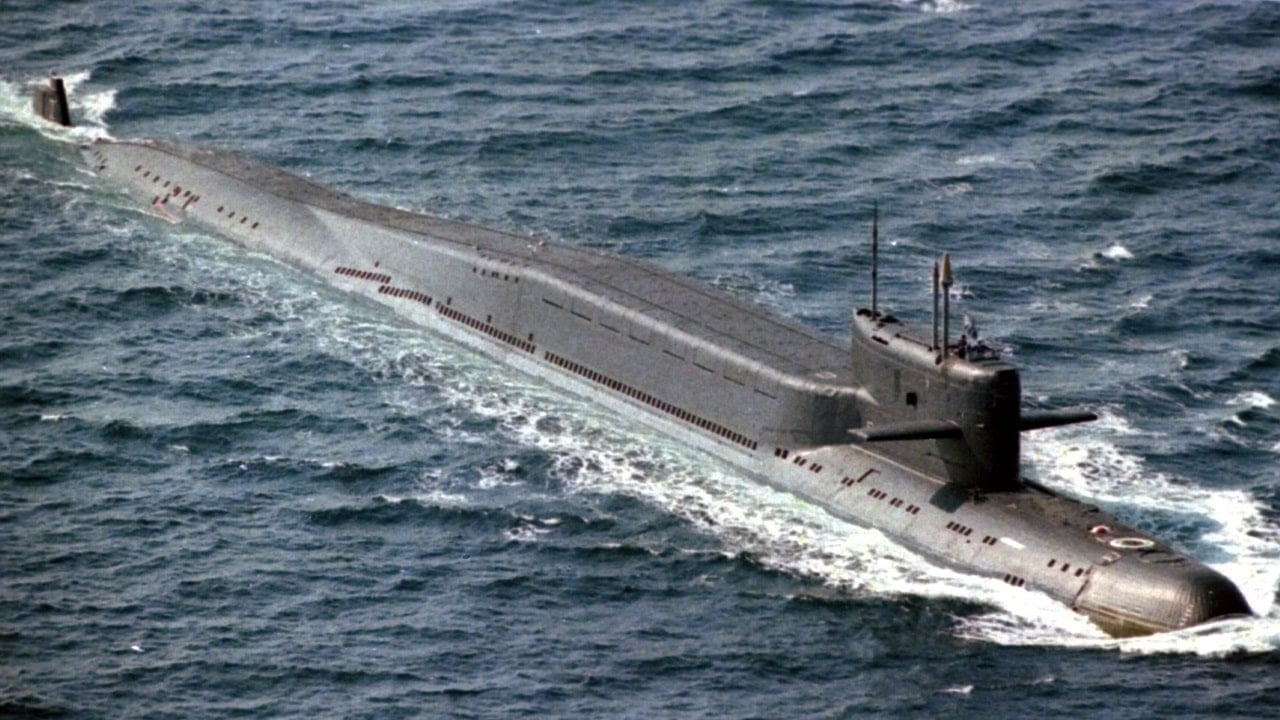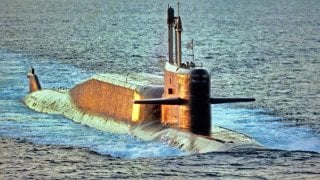Delta IV-Class: The Russian Submarines Armed To the Teeth with Nuclear Weapons
Built at the same time as the Typhoon-class, the Delta-class submarines have formed the backbone of the Soviet and Russian strategic submarine fleet since first being introduced in 1973.
Built at the same time as the Typhoon-class, the Delta-class submarines have formed the backbone of the Soviet and Russian strategic submarine fleet since first being introduced in 1973.
Known as the Project 667B Murena (NATO reporting name Delta), the submarines were designed to carry the R-29 Vysota family of nuclear ballistic missiles.
The missiles provided the boats with much needed standoff distance – offering a range of 7,700 (4,785 miles) – and allowed the Soviet Navy to perform deterrence patrols from within the Arctic Ocean. The submarines were upgraded as the Project 667BD Murena-M (NATO reporting name Delta II), the Project 667BDR Kalmar (NATO reporting name Delta III), and culminating in the Project 667BDRM Delfin (NATO reporting name Delta IV).
A total of seven Delta IV submarines were built between 1985 and 1992 by the Sevmashpredpriyatiye production association in Severodvinsk, and six remain operation.
The development of the improved submarines began in September 1975 at the Rubin Central Design Bureau for Marine Engineering.
The Improved Delta-Class Submarines
The Delta featured an increased diameter pressure hull and a longer bow section, while displacement increased by 1,200 tons. These upgraded nuclear-powered ballistic missile submarines were constructed in parallel to the Typhoon class, in case the larger boats proved unsuccessful.
The Delta IV submarines, which are 167 meters long, have an operational diving depth of 320 meters (roughly 1,050 feet) and a maximum depth of 400 meters (1,300 feet). The nuclear-powered boats have a maximum speed of 24 knots submerged, using two VM-4 pressure water reactors rated at 180 MW – which features two turbines of type GT3A-365 rated at 27.5 MW.
While an aging platform, the Delta IV boats remain quite capable and are armed with 16 R-29RMU Sineva liquid-fuel ballistic missiles, which each can carry between four and eight warheads. Unlike previous versions of the Project 667 design, the Delta IV is able to fire missiles in any direction from a constant course in a circular sector. It is also able to fire its ballistic missiles from a depth of 55 meters while cruising at a speed of six to seven knots.
According to published sources, the Project 667BDRM Delfin's Shlyuz navigation system provides for the improved accuracy of the missiles and is capable of stellar navigation at periscope depths. That navigational system further employs two floating antenna buoys to receive radio-messages, target destination data and satellite navigation signals at great depth. All of the Delta IV subs are also reported to be equipped with the Skat-VDRM hydroacoustic system, as well as a variety of torpedoes, anti-submarine torpedo-missiles and anti-hydroacoustic devices.

The submarines, based at the Sayda Guba Naval Base, operate in the Northern Fleet as part of the 12th Squadron – with four to five of the six Delta IV-class vessels are operational at any given time. The operational lifetime of these submarines is estimated to be 20-30 years, though in order to operate a ship for this period requires that a major overhaul be performed every 7-8 years.
The Unlucky Seventh?
As noted, the Russian Navy currently operates six Delta IV boats – as a seventh has already been decommissioned. Known as the Yekaterinburg following the dissolution of the Soviet Union, the K-84 had previously been awarded the Russian Navy Commander's Prize for her missile launches in 2005, and a year later successfully fired missiles at the Chizha test range from the North Pole.
The strategic sub has also accomplished combat training and test launches of intercontinental ballistic missiles (ICBMs), including Sineva and Lainer ICBMs.
However, on December 29, 2011, the submarine caught fire while undergoing a refit at a floating dry dock in Murmansk. It likely began when sparks from welding of the boat's hull ignited wooden scaffolding around the submarine, which then spread to the flammable rubber coating that covers the hull.
As previously reported, authorities struggled for more than 24 hours to put out the fire, and finally decided to partially submerge the boat to douse the flames.
Damage from the fire exceeded a billion rubles.
Initial reports claimed that the submarine was not carrying any weapons at the time of the fire, while there were no reported injuries or radiation leak. However, it was determined that this was not the case, and it was later revealed that the Yekaterinburg was in fact carrying sixteen R-29R submarine-launched ballistic missiles. Those missiles could have exploded during the fire, with potentially catastrophic consequences for the port of Murmansk and the greater region!
After three-year repairs, in late December 2014, Yekaterinburg rejoined the Fleet and her service life was extended by five years. Last year her weapons were removed in preparation for decommissioning.
In early 2021, the Russian Navy retired the submarine was removed from service and officially decommissioned. There are currently no plans to retire the remaining six boats of the Delta IV sub-class. However, all of the Russian remaining Delta and Typhoon models will eventually be replaced by the new Borei line of strategic submarines.
Author Experience and Expertise
A Senior Editor for 19FortyFive, Peter Suciu is a Michigan-based writer. He has contributed to more than four dozen magazines, newspapers, and websites with over 3,200 published pieces over a twenty-year career in journalism. He regularly writes about military hardware, firearms history, cybersecurity, politics, and international affairs. Peter is also a Contributing Writer for Forbes and Clearance Jobs. You can follow him on Twitter: @PeterSuciu.
All Images are Creative Commons.


